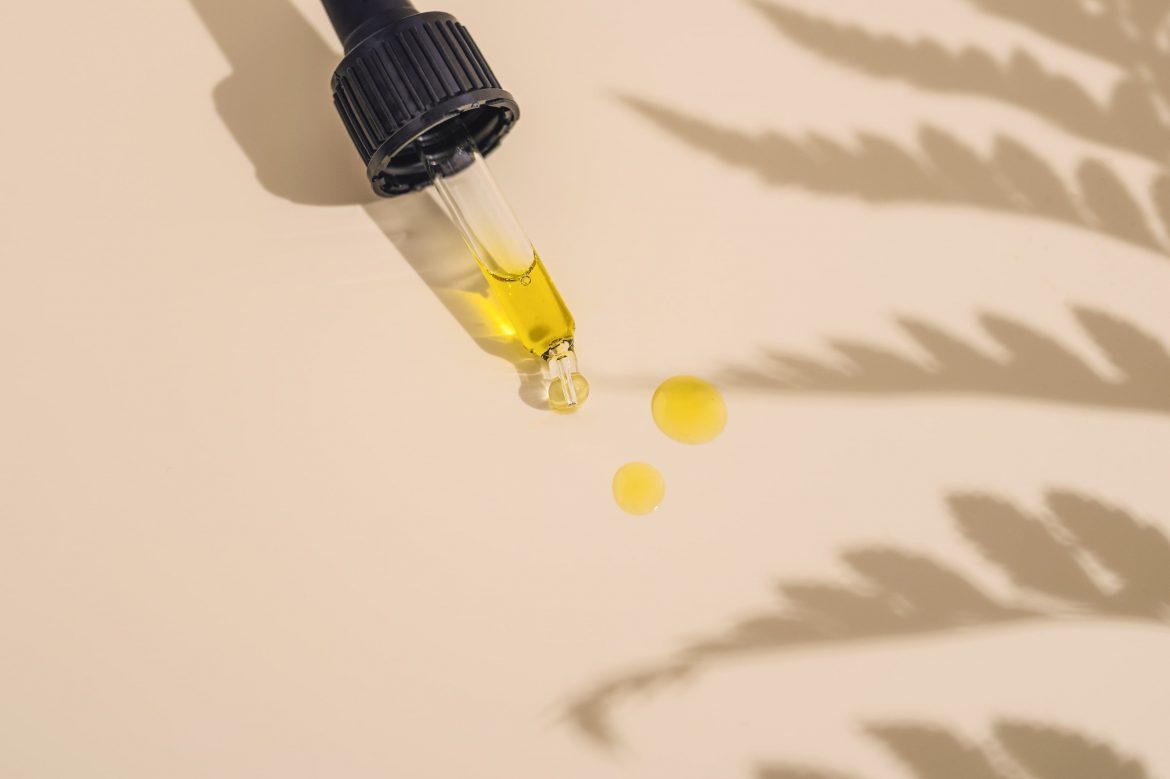SPF + Retinol = The Hottest Summer Fling!
Posted on June 08, 2023 Written by: 100% PURE®
We’ve got some juicy gossip about the hottest summer fling – SPF and Retinol. These two have been on and off for a while, but we’re pretty sure things are getting serious, and for good reason. For those not familiar with retinol, it’s right up there in our top 3 favorite anti-aging skincare ingredients; we’re talking holy grail ingredient status. And while we’re comfortable with aging, we’d prefer to do it gracefully. Many of us out there only have a vague idea of what retinol is and what retinol does, and we don’t know how to use retinol in our skincare routines. Retinol gives a reparative blurring effect to the skin, diminishing fine lines and texture to support the supple, glowing skin of our youth.
What’s all this got to do with SPF? As a topical treatment, retinol can make skin much more sensitive to the sun, and due to the nature of retinol, we rely on a sun protectant to aid and preserve our skin’s improvement. During the cooler months when we’re spending little to no time outdoors, sometimes our use of SPF can become irregular. If improved skin texture, tighter skin, fewer acne breakouts, or youthful skin are a part of your skin goals, then now is the time to learn more about retinol and its relationship to SPF. We’re ready to dish on what retinol products to use in the summer and how to protect the skin for the best results.
We’ll be honest – while we do play favorites with retinol, using it does come with risks. Let’s start by exploring how to use retinol, and what is retinol?
Retinol as we know it in skincare is a vitamin A derivative that helps with anti-aging. Retinol is a pro-collagen topical treatment that aids in smoothing and rejuvenating the outermost layers of our skin, resulting in less texture and more glow. Retinol or retinoids aid in skin cell turnover, which in simplest forms means new skin, faster. This is perfect for those of us looking to fade melasma and dark spots, as well as acne and fine lines, but this also means our skin becomes more vulnerable to the sun.
The first thing to know about how to use retinol is that it should always be paired with an SPF. Due to the fact that retinol is pushing new skin to the surface, that new skin is going to be vulnerable to the sun. Rather than seeing the complexion improvements we’re looking for, sun exposure can then lead to worsening of any discoloration, decreased efficacy of retinol, and enhanced risk of sunburn simply because of the retinol exposure. This is why retinoids should be used in our nighttime skincare, but not during the day.
There are few skincare options as widely available and effective as retinol at transforming texture, discoloration, and supporting tight, bouncy skin. With the risks of retinol finally out in the open, we can embrace retinol responsibly because it’s honestly too good of an ingredient to skip. And of course, our skincare goals don’t stop just because the sun is out! We know that staying consistent with our skin routine is the most important way to see lasting results, so here’s how to use retinol – summertime edition.
Newsletter Subscribe
for more blog updates and exclusive discounts
Night Use Only: as we mentioned before, retinol and the sun just don’t mix. It’s never recommended to use retinoids during the daytime so be sure to add this in only before bed. In addition, be sure to thoroughly cleanse the skin in the morning (following up with a sun protectant) to ensure there’s no product leftover.
Not Pregnant or Nursing: unfortunately retinol is not recommended for moms that are pregnant or nursing, as it can pose risks to the baby. The good news is that it’ll be patiently waiting to be added in for that post-nursing updated skincare regimen.
Gradual Use: with any new product, we want to introduce it to our skin slowly. Not only does this reduce the risk of irritation, but as retinol can be quite potent, slow and gradual use is the best way to find out our own individual ideal retinol frequency. Start with a low potency retinoid used once to twice weekly, building up while monitoring the skin’s reaction. Keep in mind that some redness, dryness, peeling, and flaking are normal.
Be Gentle: because retinoids increase skin cell turnover, that means our new surface skin is more delicate than usual. When we’re adding a new retinol product to our routine it’s important to cut out or reduce the use of other somewhat harsh skincare elements. It may be necessary to cut back on physical and chemical exfoliants, avoid aggressive skincare treatments, and simplify the rest of our skin and beauty routine.
Sandwich Method: when we think about how to use retinol, we use a retinoid in a carrier product and imagine it in a sandwich because we layer it in between other nourishing products. We find retinoids most effective when they’re applied after toner and eye cream but before our evening moisturizer. This means that a serum, oil, or hydrating moisturizer is a great vehicle for getting retinol onto the skin.
Up the Hydration: we mentioned that there are side effects to adding retinol to a skincare routine, dryness being one of the most common results. To combat this, we recommend adding more hydration to our day and evening skin regimen. Introducing hyaluronic acid, aloe vera, and/or glycerin in some format (serum, moisturizer, mask) will help maintain the moisture in our skin while retinol is doing the transformative heavy lifting.
SPF 1000: not to be a broken record, but bumping up the daily SPF is our final tip here. Don’t quote us on this, but we’re almost sure that no one has ever regretted having too much sun protectant. Once a retinoid is added to any routine, additional sunscreen is highly advised. Broad-spectrum above 30 is recommended, remembering to reapply every couple of hours (especially in high-sun exposure environments).
It’s not just about the added sun protection, the gradual addition of retinol, or even simply adding the retinoid to our routines – formula and quality play a huge role in seeing the benefits of retinol. Here are some of the types of products we like to see retinol in, why they work, and how to use retinol in these formulations.
Toner: we like to see our hard-working ingredients stay on the skin meaning no product types that get diluted or washed off, but for sensitive, reactive, and mature skin types, starting a retinol journey with toner can be a gentle, gradual way to introduce this product to the skin.
Serum: a retinoid serum has got to be one of our favorite combinations in all of skincare. This step in our routine means the skin is primed and ready to absorb a hydrating ingredient like a serum, so a retinoid can get in deep and start making an impact right away. Still, the hydrating nature of serum means we’re balancing out the drying nature of retinol at the same time.
Eye Cream: since many of us see our age showing first in the under-eye area, a retinoid eye cream is – muah – chef’s kiss! Use with discretion as the eyes can be a sensitive area, but a retinoid can be most beneficial in this highly textured zone of the face.
Moisturizer: similar to a serum, seeing retinol in moisturizing format means our skin gets both balance and potency. Go for more of a hydrating formula for deep penetration or a thicker, balm-like moisturizer to restore the skin barrier and ensure our skin gets the full retinol effect.
Face Oil: like a goodnight kiss for the skin, as the final product we usually put on, having a retinoid face oil can mean added glow and super fast results. Better for those who are not new to retinoids, a retinol face oil used consistently can deliver not just vitamin A but vitamins C, D, and E to our skin.
Frequently Asked Questions About Retinol in Summer
What are the benefits of using retinol in your skincare routine?
Retinol, a derivative of vitamin A, offers several benefits for the skin, including:
Anti-Aging: Retinol promotes collagen production, reducing the appearance of fine lines and wrinkles.
Skin Texture: It helps in cell turnover, which can lead to smoother, more even skin texture.
Acne Reduction: Retinol can help unclog pores and reduce acne breakouts.
Hyperpigmentation: It can lighten dark spots and even out skin tone.
Brightening: Regular use can give the skin a radiant and youthful glow.
How does retinol improve skin texture and reduce fine lines?
Retinol accelerates cell turnover, meaning it helps your skin shed dead cells and replace them with new ones more quickly. This process:
Stimulates Collagen Production: Increased collagen leads to firmer, more elastic skin.
Enhances Cell Renewal: The faster turnover rate reduces rough patches and fine lines.
Unclogs Pores: By keeping pores clear, retinol can help reduce acne and improve overall skin texture.
Why is it important to use SPF with retinol during summer?
Retinol makes your skin more sensitive to the sun because it speeds up cell turnover and exposes newer skin cells to the surface. Using SPF is crucial to:
Prevent Sunburn: New skin cells are more susceptible to damage from UV rays.
Avoid Hyperpigmentation: Sun exposure can cause dark spots, which retinol aims to reduce.
Protect Against Damage: Without SPF, the sun can negate the positive effects of retinol by causing premature aging and increasing the risk of skin cancer.
What are the risks of using retinol without sun protection?
Using retinol without proper sun protection can lead to several issues:
Sunburn: Increased sensitivity can result in quicker and more severe sunburns.
Irritation: The combination of retinol and UV exposure can cause redness, peeling, and irritation.
Hyperpigmentation: Instead of reducing dark spots, retinol can make them worse when exposed to the sun.
Premature Aging: Sun damage can accelerate signs of aging, counteracting retinol’s anti-aging benefits.
How should retinol be incorporated into a nighttime skincare routine?
To effectively incorporate retinol into your nighttime skincare routine:
Cleanse: Start with a gentle cleanser to remove makeup and impurities.
Apply Retinol: Apply a pea-sized amount of retinol to your face, avoiding the eye area.
Moisturize: Follow with a hydrating moisturizer to combat any potential dryness or irritation.
Frequency: Start with using retinol 1-2 times a week and gradually increase as your skin builds tolerance.
Avoid Harsh Products: Refrain from using other potentially irritating products like exfoliants or acids on the same nights as retinol.
Consistency: Use retinol consistently to see the best results over time.

